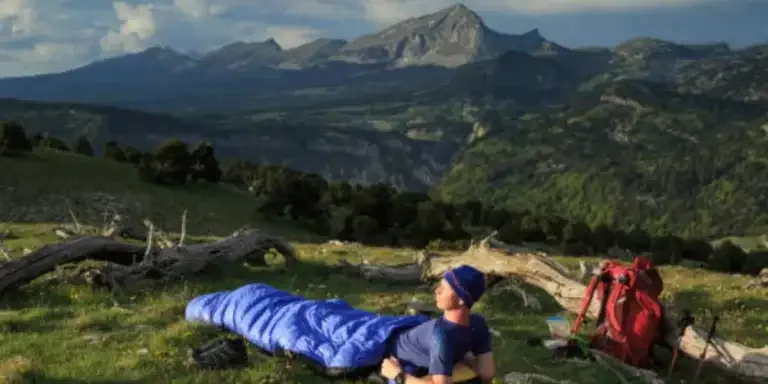In the dynamic realm of outdoor equipment, sleeping bags stand as a cornerstone product, evolving continuously to meet the diverse needs of outdoor enthusiasts. The year 2024 marks a significant phase in this evolution, showcasing advancements in materials, design, and functionality. These sleeping bags not only promise enhanced comfort and adaptability for various climates and terrains but also embody the latest in insulation technology and ergonomic design. As essential gear for camping and outdoor activities, they offer users an unparalleled outdoor sleeping experience, blending warmth, durability, and convenience. This evolution reflects a deep understanding of the end-user’s requirements, ensuring that each sleeping bag serves as a reliable companion in diverse outdoor adventures.
Table of Contents:
1. Spectrum of sleeping bags and their utilization
2. Insights into 2024’s sleeping bag trends
3. Critical factors for sleeping bag selection
4. Showcase of premier sleeping bag models and features
5. Conclusion
Spectrum of sleeping bags and their utilization
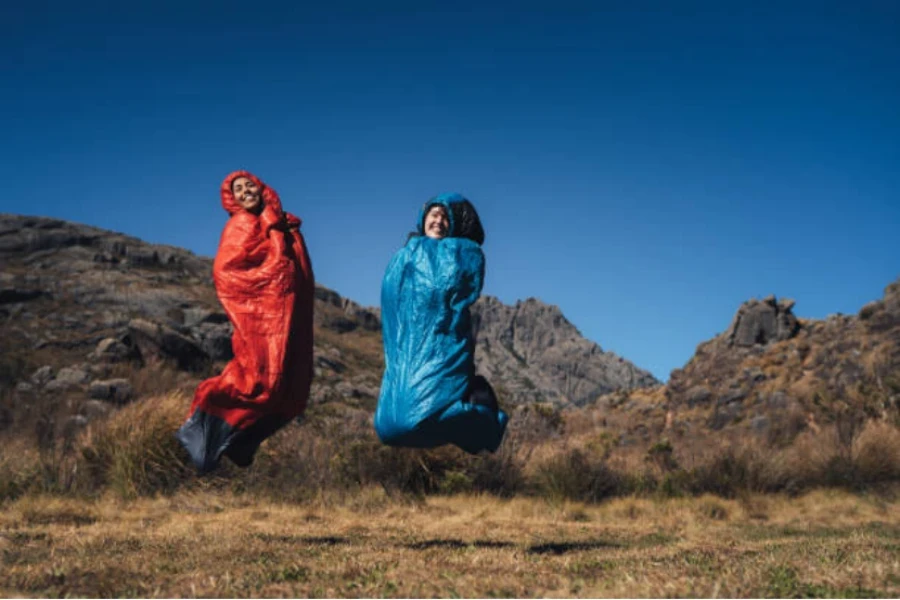
In the landscape of outdoor gear, sleeping bags represent a fusion of innovation and practicality, catering to a spectrum of outdoor scenarios. The variety in sleeping bag designs is a testament to the industry’s commitment to versatility and user-specific needs.
Cataloging sleeping bag types
The array of sleeping bag designs is as diverse as the environments they are used in. Mummy bags, known for their snug fit and efficient insulation, are a staple for backpackers needing to minimize space and weight. Their tapered design and hood provide excellent warmth retention, making them ideal for colder conditions. Rectangular sleeping bags, on the other hand, offer more room and comfort, often favored for car camping or leisure activities where space and weight are less of a concern. Hybrid forms, combining elements of both mummy and rectangular designs, cater to those seeking a balance between warmth and space.
Semi-rectangular bags, also known as barrel-shaped bags, strike a middle ground, offering more room than mummy bags while still being relatively weight and space-efficient. Double bags, designed for two people, are becoming increasingly popular, especially among couples who camp together. These bags not only provide shared warmth but also enhance the camping experience through shared comfort.
Quilts and elephant’s foot bags represent the more minimalist and ultralight end of the spectrum. Quilts, forgoing the traditional zippered design, are favored by ultra-light hikers for their versatility and weight savings. Elephant’s foot bags, covering just the lower half of the body, are used in conjunction with insulated jackets for alpine climbers who prioritize weight savings above all else.
Tailored uses for each sleeping bag design
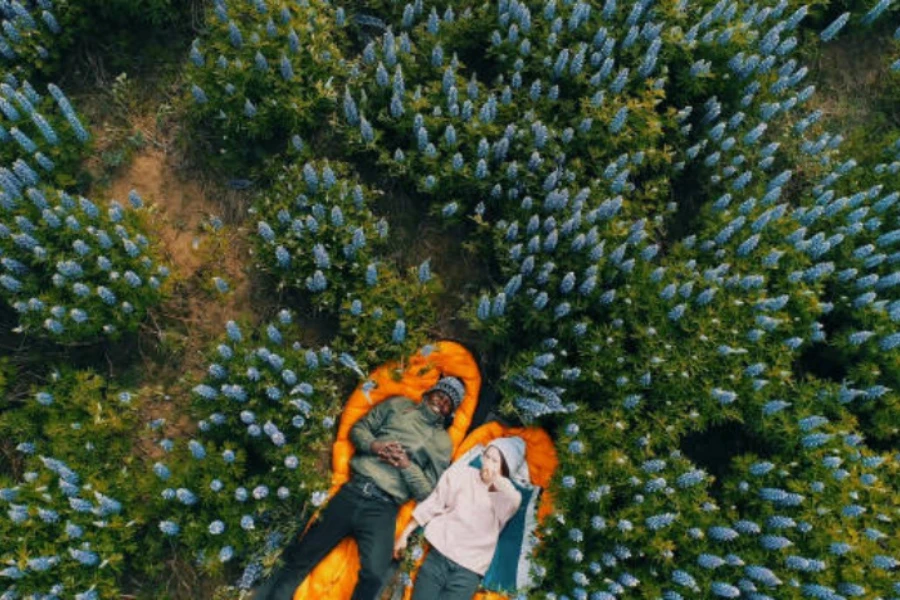
The choice of a sleeping bag is heavily influenced by its intended use. Mummy bags, with their superior warmth-to-weight ratio, are the go-to choice for backpackers and mountaineers who face cold temperatures and need to keep their gear lightweight. Rectangular bags, offering more comfort and space, are ideal for casual camping trips, family outings, and situations where carrying weight is not a primary concern.
For those who engage in a variety of outdoor activities, hybrid and semi-rectangular bags offer a versatile solution. They provide a balance of comfort and warmth, suitable for both car camping and light backpacking trips. Double bags enhance the camping experience for couples, providing a cozy, home-like sleeping environment, which is particularly appealing for car camping and recreational camping.
In the realm of extreme and specialized activities, quilts and elephant’s foot bags come into play. Quilts offer adaptability for a range of temperatures and are favored in warmer climates or by those who sleep warm. Elephant’s foot bags, designed for alpinists, are part of a layered sleeping system, offering critical warmth for the lower body while reducing the overall gear weight.
This diverse range of sleeping bag types and their tailored uses reflect the industry’s deep understanding of different outdoor activities and environments. Each design is a response to specific user needs, ensuring that every outdoor adventure, whether it’s a leisurely family camping trip or a challenging alpine climb, is supported by the right gear.
Insights into 2024’s sleeping bag trends
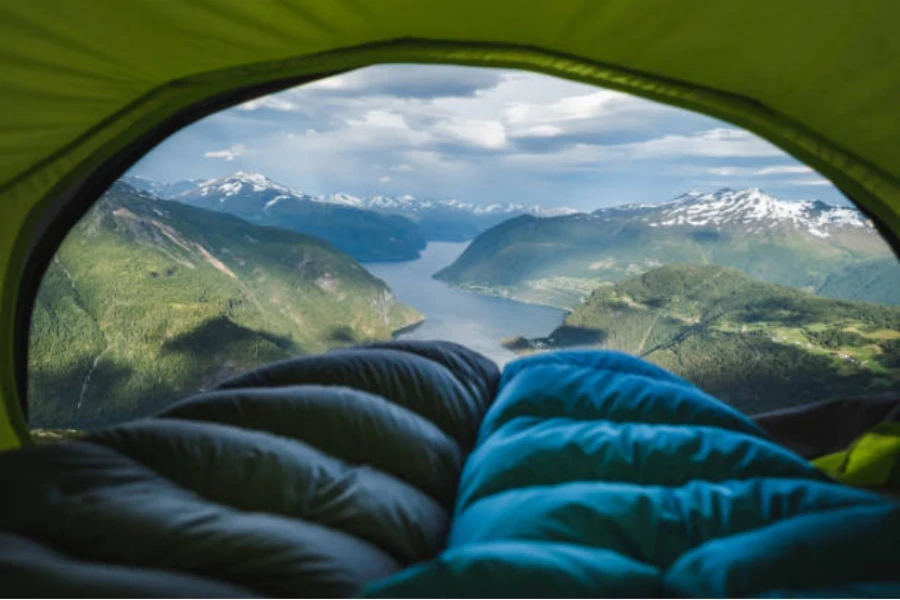
The sleeping bags market is expanding due to an increase in outdoor activities such as hiking, hill walking, climbing, and camping. The rise in adventure enthusiasts who are drawn to nature and seek cost-effective vacation options is driving the demand for sleeping bags. The global sleeping bags market is currently experiencing significant growth. According to a report by Future Market Insights, the market was valued at US$ 1,545 Million in 2021 and is expected to reach US$ 1,655 Million in 2022. By 2032, the market is projected to grow to a value of approximately US$ 3,050 Million, with a Compound Annual Growth Rate (CAGR) of 6.3% from 2022 to 2032.
Trends shaping the sleeping bag sphere
The sleeping bag industry in 2024 is witnessing a surge in technical advancements and luxurious designs, transforming these essential outdoor items into something akin to mobile sleep spas. The focus is on creating bags that offer superior comfort and warmth, even in sub-zero temperatures, without compromising on sustainability and versatility.
Key trends include:
Innovative Materials and Design: Manufacturers are increasingly using water-repellant outer fabrics and breathable interior liners to enhance comfort and durability. The use of hydrophobic down and synthetic insulation in the toebox is becoming more common, addressing the issue of moisture accumulation and ensuring better warmth retention.
Enhanced Temperature Regulation: Features like redesigned ‘Thermo Gills’ on bags allow for more precise temperature control, catering to varying environmental conditions and personal comfort levels.
Sustainability: There’s a noticeable shift towards using recycled materials, with many brands opting for 100% recycled, bluesign-approved fabrics for both the shell and liner.
Shifts in preferences and expectations

Consumer preferences in 2024 are leaning towards sleeping bags that offer a blend of comfort, versatility, and environmental consciousness.
Comfort and Warmth: The demand for bags that provide a cocoon of warmth without causing overheating is high. Bags like the Feathered Friends Widgeon ES -10 exemplify this, offering plush comfort while maintaining an excellent warmth-to-comfort-to-weight ratio.
Versatility: Bags that can adapt to different temperatures and environments, like the NEMO Sonic Down Mummy, are highly sought after. Their ability to pack down compactly while offering robust features is a key selling point.
Expedition-Ready Features: For more adventurous consumers, bags like the Therm-a-Rest Polar Ranger -20, designed with input from polar explorers, are gaining popularity. These bags are tailored for extreme conditions and include features like side zips for venting and hand-use, and a snorkel hood for improved breathing and moisture protection.
In summary, the sleeping bag market in 2024 is characterized by a push towards innovative, sustainable designs that do not compromise on comfort or functionality. Consumers are looking for products that can handle a range of conditions and preferences, with a growing emphasis on eco-friendly materials and construction.
Critical factors for sleeping bag selection
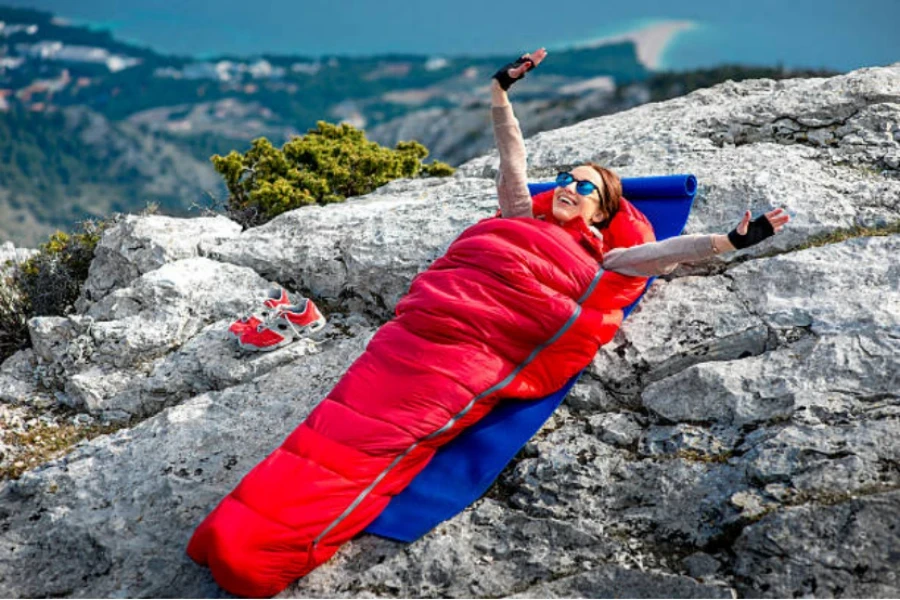
Fabric and insulation breakdown
In the realm of sleeping bags, the choice of fabric and insulation is paramount. Down insulation, revered for its lightweight and compressible nature, offers exceptional warmth. It’s a preferred choice for those seeking a balance between warmth and weight. However, down’s performance can diminish when wet, making it less ideal for damp conditions. Synthetic insulation, on the other hand, retains heat even when wet and is generally more affordable. It’s bulkier and heavier compared to down but stands as a reliable option for damp environments. The latest innovations in sleeping bag materials also include synthetic blends that aim to offer the best of both worlds – the warmth of down and the moisture resistance of synthetics.
Balancing temperature ratings and portability
The temperature rating of a sleeping bag is a critical factor, indicating the lowest temperature at which it will keep a sleeper warm. These ratings are often standardized through the EN (European Norm) or ISO (International Organization for Standardization) systems. For instance, a summer bag rated at 32°F is suitable for warm conditions, while a 20 to 32°F bag is ideal for three-season use. For winter camping, bags rated below 20°F are necessary, with expedition bags going down to -40°F or lower.
The design of the sleeping bag also impacts its warmth. Mummy-shaped bags, with less air space, require less body energy to warm up, making them warmer but less roomy. Rectangular bags offer more space but may feel colder due to the extra air space.
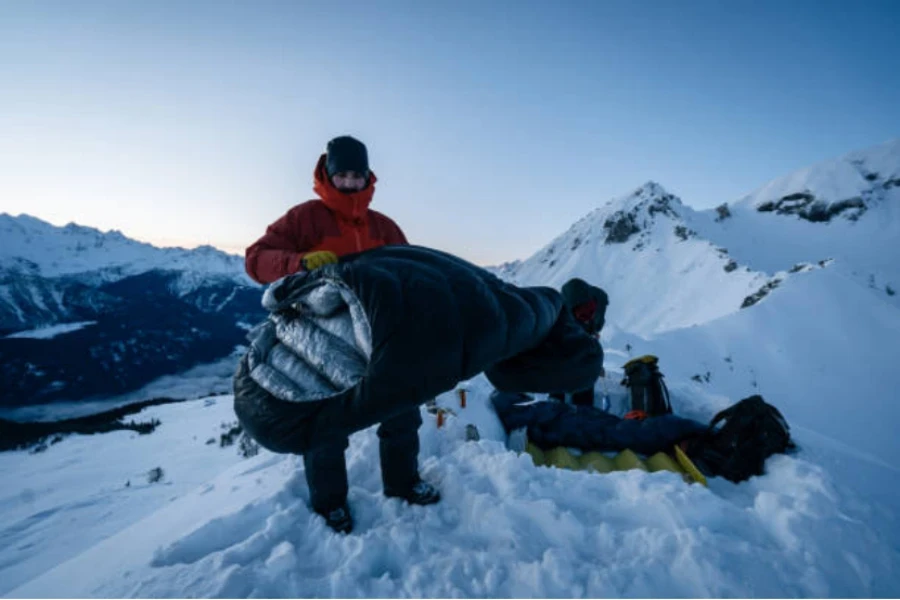
However, this rating must be balanced with portability. Heavier bags typically offer more warmth but can be a burden for those who need to travel light, such as backpackers. Conversely, lighter bags are easier to carry but might not provide sufficient warmth in colder conditions. This balance is crucial for professionals selecting sleeping bags for varied environments and user needs.
Longevity and maintenance considerations
Durability and ease of maintenance are also key considerations. High-quality materials and construction can extend the life of a sleeping bag, making it a more sustainable and cost-effective choice in the long run. Maintenance, including cleaning and storage, plays a significant role in preserving the bag’s quality and performance. For instance, down bags require special care to maintain their loft and insulating properties, while synthetic bags are generally more forgiving and easier to care for. The choice between down and synthetic materials thus extends beyond immediate comfort to long-term usability and care.
Additional Insights
Sleeping Bag Design and Warmth: The shape and features of a sleeping bag, such as hoods and draft collars, significantly affect its warmth. Roomier bags might offer more comfort but can be less warm due to the extra space that needs to be heated.
Personal Warmth Preferences: Individual factors like metabolism, gender, and age can influence how warm a person feels in a sleeping bag. It’s important to consider one’s personal ‘warmth profile’ when choosing a bag.
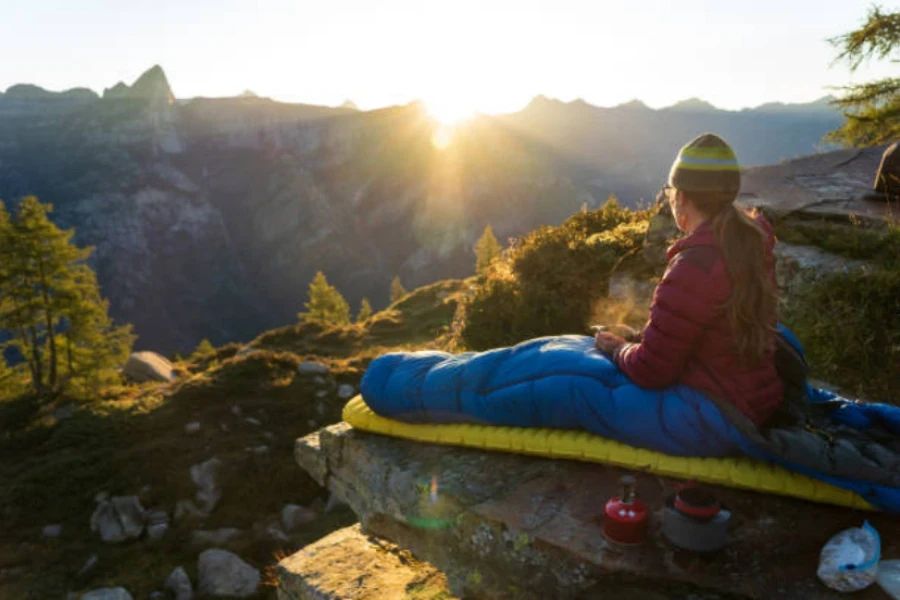
Impact of Sleeping Pads: The R-value of a sleeping pad, indicating its insulating properties, plays a crucial role in overall warmth. A higher R-value pad is essential for colder conditions to insulate from the ground effectively.
Maintenance Tips: Proper care, including storage and cleaning, is crucial for maintaining the insulating properties and overall longevity of the sleeping bag.
In summary, the selection of sleeping bags hinges on a thorough understanding of materials, balancing warmth with weight, and considering long-term use and maintenance. These factors are crucial in ensuring that the chosen products meet the diverse needs of users in various outdoor scenarios.
Showcase of premier sleeping bag models and features
Spotlight on 2024’s top models
The sleeping bag market in 2024 has seen remarkable innovations, with several models standing out for their exceptional features and design. Among these, the Marmot Sawtooth 15 has garnered attention for its versatility and sustainable design, incorporating Responsible Down Standard certification and recycled fabrics. It excels in comfort and warmth, making it a top choice for varied outdoor conditions.
Another notable model is the Kelty Catena, a budget-friendly option ideal for casual camping. Its spacious design and synthetic Cloudloft insulation cater to a comfortable experience in moderate temperatures, though it may not be suitable for harsh winter conditions.
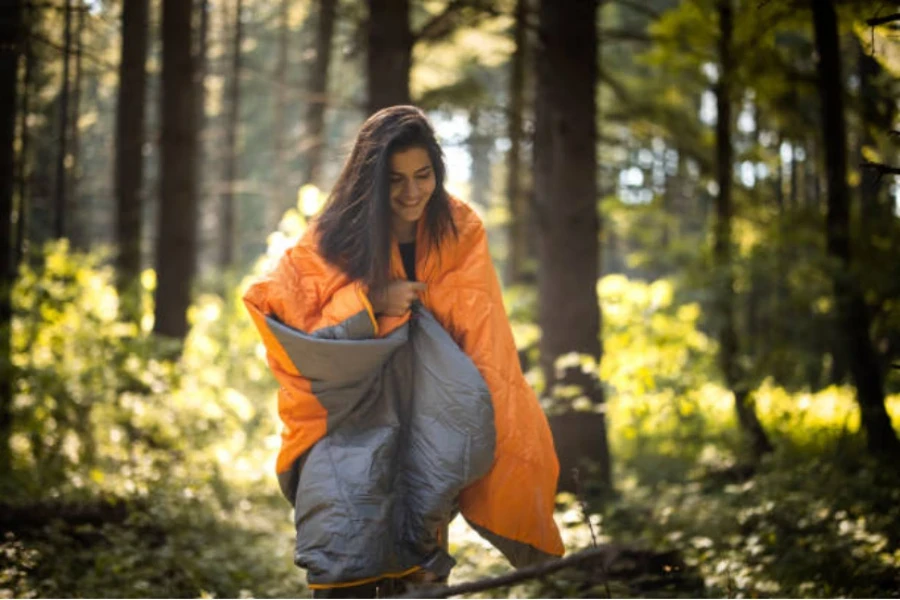
For those seeking ultralight options, the Enlightened Equipment sleeping quilt stands out. Its unique design, combining a quilt and sleeping bag, offers versatility across different temperatures, especially when paired with a sleeping pad. This model is particularly favored by long-distance hikers for its lightweight and adaptable nature.
The Big Agnes Sidewinder is designed with side-sleepers in mind, offering ergonomic contours and body-mapped insulation. While it performs well in most conditions, additional insulation might be necessary in temperatures below 25 degrees Fahrenheit.
The Rab sleeping bag is another high-end model, notable for its ultra-lightweight design and Thermo Ionic Lining Technology (TILT). It’s particularly suited for alpinists and those engaged in fast-packing or minimalist backpacking.
Feature-by-feature comparative review
When comparing these models, functionality, user feedback, and performance are key aspects to consider. The Marmot Sawtooth 15 is a standout for its all-around performance and sustainability, making it a top pick for various outdoor activities. Its innovative design features, such as temperature control wings and an internal stash pocket, add to its appeal.
The Kelty Catena, while affordable and roomy, may fall short in colder conditions, suggesting its best use for spring and summer camping. Its versatility as a blanket and the option to create a double-wide sleeping bag are notable features. The Enlightened Equipment sleeping quilt’s ultra-lightweight design and adaptability across temperatures make it a favorite among long-distance hikers. Its quilt-style design, however, may require additional insulation in colder conditions.
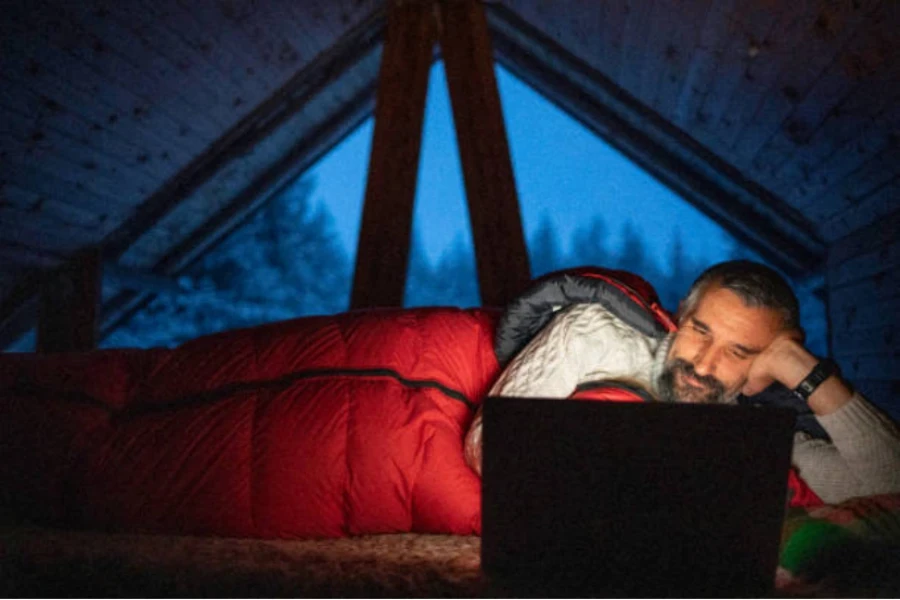
For side-sleepers, the Big Agnes Sidewinder offers specialized comfort with its ergonomic design and insulation that moves with the body. However, its temperature rating might be slightly optimistic, necessitating extra layers in colder weather. Lastly, the Rab sleeping bag, with its cutting-edge TILT technology and ultra-lightweight design, is ideal for those prioritizing portability and warmth in extreme conditions, albeit at a higher price point.
In conclusion, each of these models caters to specific needs and preferences, from sustainability and versatility to specialized designs for different sleeping styles and conditions. Their innovative features and user-centric designs make them top choices in the 2024 sleeping bag market.
Deeper dive: Other outstanding options
The sleeping bag market in 2024 showcases a range of innovative and high-performing models, each tailored to meet specific outdoor needs. Here’s a closer look at some of the top models and their standout features:
NEMO Sonic Down Mummy – Priced at $600, this model is celebrated for its versatility. Weighing 3 pounds and 4 ounces, it comes in short, regular, and long sizes. Its most notable feature is the redesigned “Thermo Gills,” vents on top of the bag that can be opened or closed to regulate body temperature. The bag’s draft tube and draft collar have been redesigned for improved warmth retention, and it uses 800-fill power hydrophobic down. The shell and liner fabrics are 100% recycled, making it a sustainable choice. Its hood is roomy and can be cinched tightly, and the bag is noted for its excellent packability and robust zipper.
Feathered Friends Widgeon ES -10 – This model is priced at $889 and weighs 3 pounds and 2 ounces. Available in regular and long sizes, it’s known for its extreme warmth and comfort. The bag has received a facelift with additional responsibly-sourced 900-fill power goose-down, sandwiched between a 10-denier nylon Pertex taffeta lining and a water-resistant, breathable Pertex nylon shell. It features a contoured hood and collar for snug warmth and a draft tube to prevent cold air seepage. Despite its loftiness, it packs down impressively small.
Therm-a-Rest Polar Ranger -20 – At $790, this bag weighs 3 pounds and 4 ounces and comes in regular and long sizes. It’s designed for expeditions, with a pioneering three-quarter length zipper for weight reduction and warmth increase. The bag features zippered side vents for heat dumping and arm use, and a redesigned snorkel hood for improved breathing and ventilation. The 800-fill hydrophobic down ensures warmth even in extreme conditions. The bag’s size has been slightly increased for better fit with heavy winter layers.
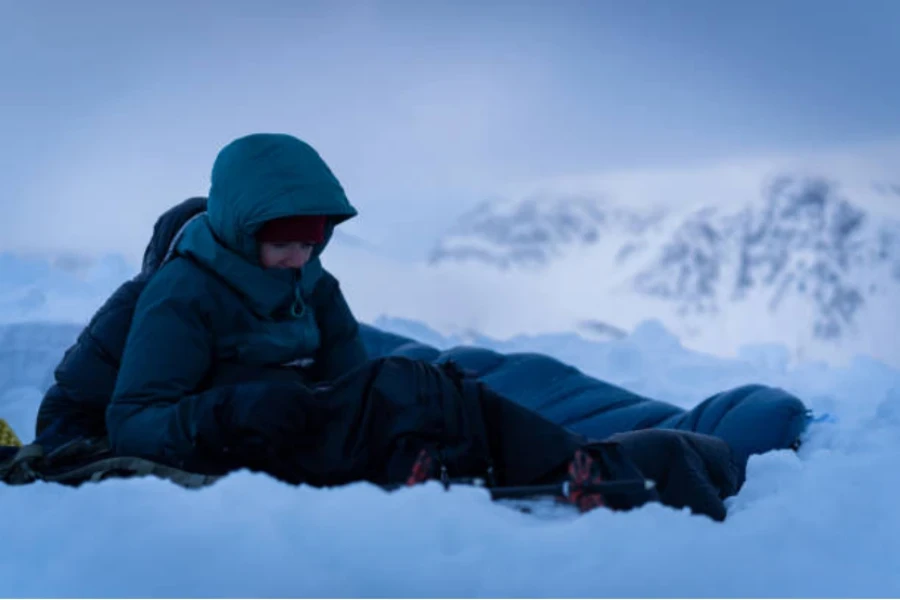
These models represent the pinnacle of sleeping bag design in 2024, offering a blend of warmth, comfort, and innovation. They cater to a range of outdoor activities, from mountaineering to winter camping, ensuring that users can find a sleeping bag that meets their specific needs.
Conclusion
The landscape of sleeping bags in 2024 presents a dynamic array of choices, each tailored to enhance outdoor experiences. From the sustainable and versatile Marmot Sawtooth 15 to the ultralight and innovative Rab sleeping bag, the market caters to diverse preferences and needs. These advancements reflect a deeper understanding of outdoor enthusiasts’ requirements, blending functionality with comfort. As the industry continues to evolve, the strategic selection of sleeping bags becomes crucial, ensuring every outdoor adventure is met with the right balance of warmth, comfort, and practicality.
